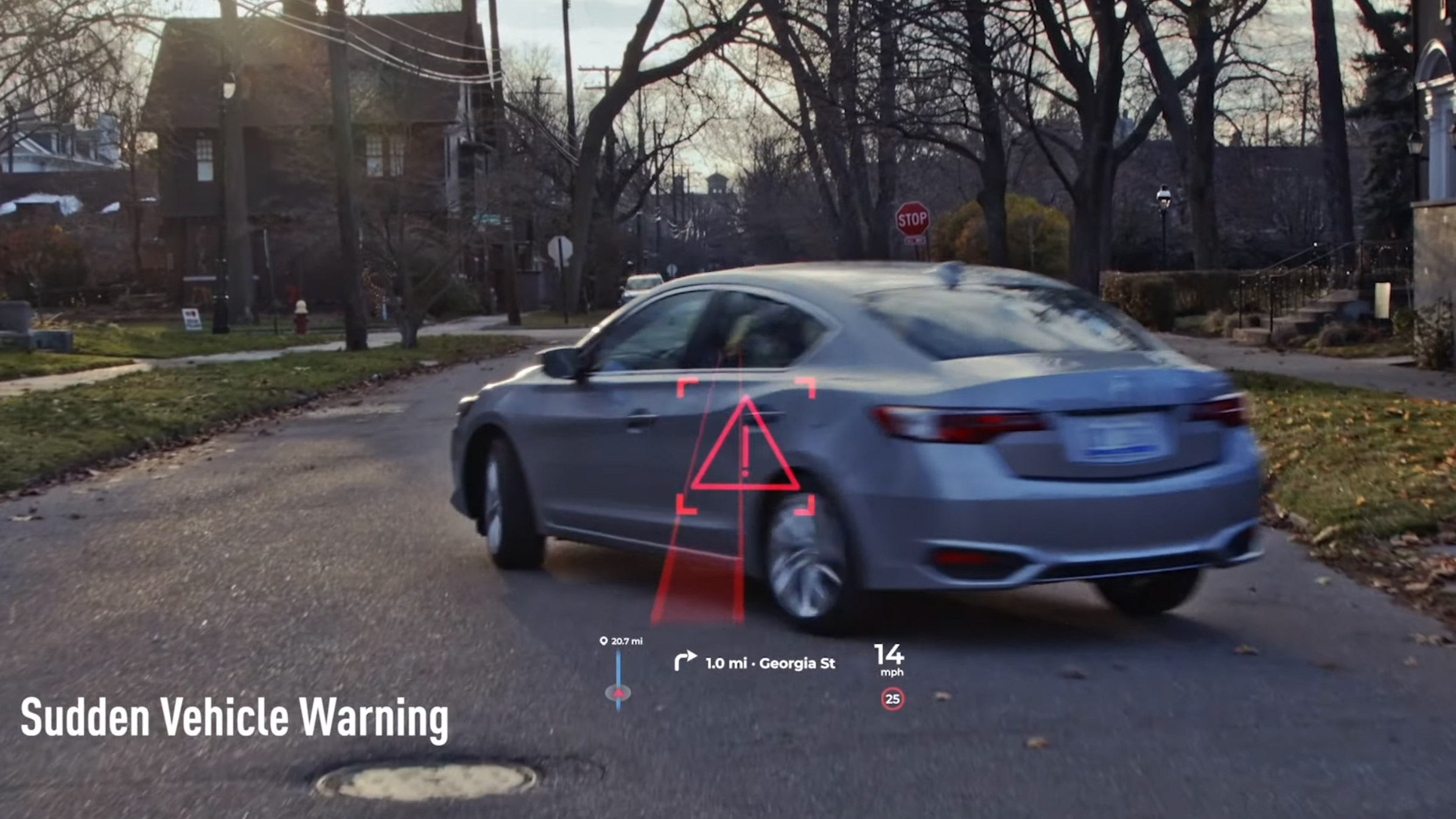As cars become more autonomous, manufacturers and suppliers are cooking up new and intuitive ways to keep drivers/passengers informed behind the wheel. Many automakers are looking to heads-up displays to fill that responsibility, but modern HUDs are limited in terms of display space and intelligence.
Enter Panasonic. The tech company rolled into this year’s all-digital Consumer Electronic Show with a number of automotive innovations, including in-car Dolby Atmos surround sound and what it calls the industry’s first automotive-grade Wi-Fi camera. But the real star of its show, and the one with arguably the most far-reaching implications, is the company’s augmented-reality HUD.
Panasonic’s system projects graphics onto a car’s windshield, in concert with a vehicle’s surroundings. That’s not a revolutionary idea, and Panasonic is hardly the only one at work in this space. However, its proposal appears to be among the more comprehensive and production-ready out there.
The AR HUD takes account of road vibration, for example, by using a “proprietary camera image stability algorithm” to ensure that the HUD’s graphics line up with the road even when things get bouncy. It has a 4K resolution, necessary for a HUD that intends to cover a vast amount of space in front of the driver, that must relay information with precision. And it’s fast, with Panasonic claiming “AR environment information updates in less than 300 milliseconds.”
Driver eye-tracking also plays an important role, as any mismatch between the driver’s perspective and the HUD’s projections destroys the credibility of the system. From Panasonic’s press release:
[Eye tracking technology] projects information at driver’s level of sight based on driver’s eye position, eliminating a potential mismatch between the projected image when the driver moves their head.
The bottom portion of the HUD covers the same information you’d see in higher-end cars with the feature today, including basic navigation information, current speed and speed limits and a fuel level indicator. Beyond that space, you’ll be able to see navigation paths rendered with proper perspective above roadways in real-time, as well as warnings for obstructions, cyclists, pedestrians, crosswalks, vertical clearances and so on.

Panasonic developed the holographic aspect of its HUD with a company called Envisics, a UK startup that is reportedly supplying similar tech to the Cadillac Lyriq, according to India Times’ ETAuto. Panasonic also worked with Phiar for the “deep-learning AI technology” to make sense of all that visual stimuli. The system is said to be efficiently packaged and compact — a crucial detail, because cars happen to come in a variety of shapes and sizes.
The first road cars with the AR HUD are slated for production in 2023, according to ETAuto’s interview with Envisics. That’s not tomorrow, though it is far more imminent than the usual CES prediction of “someday.”
CES is often dismissed in automotive spheres for showcasing pie-in-the-sky technologies that more often than not amount to vaporware, presenting a very tenuous link between what appears on the show floor and what’ll be built into your next car. But HUDs have gained popularity with buyers, and they figure to become an even more significant feature as cars get better at driving themselves. Panasonic and its partners are helping to realise that potential.
